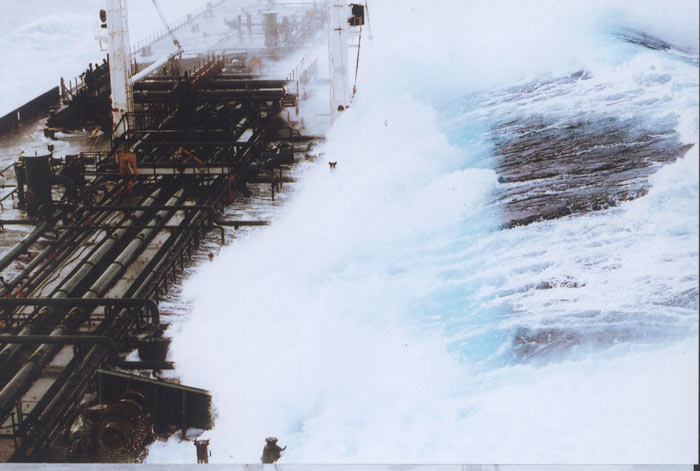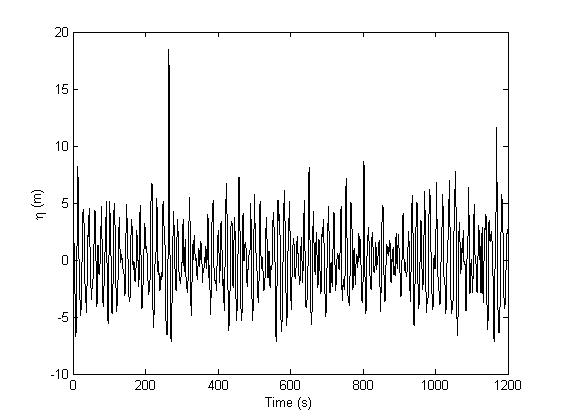Freak Waves Could Spring from Clash of Wave Patterns

Towering walls of water blamed for taking out huge ships and helicopters alike have remained a mystery. What would cause a single wave among many others to reach 100 feet high? New computer simulations suggest that a freak, or rogue, wave may result when two wave systems meet while traveling perpendicular to each other.
"No one really has an adequate explanation as to why you would get freak waves in the middle of the ocean," study researcher Thomas Adcock, of the University of Oxford, told LiveScience. "Our real objective in studying these is eventually we would say, 'This particular sea state is particularly susceptible to freak waves.' " [Image Gallery: Monster Waves]
A rogue wave is defined as any open-ocean wave that is abnormally larger than the waves around it. Such freak waves have been hypothesized as the cause of disappearances in the Bermuda triangle.
Unusual undulations

The phenomena have been noted for centuries, but no scientific measurement of their occurrence existed until 1995, when the laser reading of a wave battering the Draupner oil rig in the North Sea measured it as 85 feet tall (26 meters). The laser, attached to one corner of the platform, documented the giant in the midst of a stormy period of 30-foot-high (11 meters) waves.
"It produced a lot of excitement in the ocean engineering community; it's very strong evidence that there were such things as freak waves," Adcock said. "There was actually some minor damage; we are pretty confident that the wave really was that high."
Instead of the water level dipping as the large wave approached, it seemed to build up. This strange phenomenon made Adcock contemplate how and why these waves could form.
Sign up for the Live Science daily newsletter now
Get the world’s most fascinating discoveries delivered straight to your inbox.
Wave of inspiration
No one theory has yet to explain the behemoths. One study published in 2008 suggested rogue waves could rise from the open ocean seemingly out of nowhere as lots of smaller waves concentrate into one as it sucks energy and water from those around it. However, this type of wave doesn't show the same buildup pattern as the Draupner wave, Adcock said.
After watching a clip of the Discovery Channel show "The Deadliest Catch" and noticing a 100-foot (30 meter) rogue wave almost tipping a fishing vessel, the Aleutian Ballad, when it crashed into its side, instead of the front like the other waves (see video below), Adcock realized that these freak waves may be caused by two interacting wave systems traveling perpendicular to each other.
"I realized that that would actually explain some of the things that had been puzzling us," Adcock said. "The position of two waves at very different angles would produce this effect."
He simulated the interaction of two wave systems to determine if this would give the same upwelling and create a rogue wave like the one seen at Draupner. What he found matched the data well, showing the same upwelling (the bulge, rather than dip, as the wave approached), and creation of an abnormally large wave.
The team even did some "hindcasting," in which they could use the sea conditions to go back in time and see what the waves were doing at the time of the freak wave. "We can see from that, there was some wave energy going 90 degrees from the rest of the waves," Adcock said.
They don't know what could have created the two conflicting wave patterns.
The study was published today (June 14) in the journal Proceedings of the Royal Society A: Mathematical, Physical & Engineering Sciences.
You can follow LiveScience staff writer Jennifer Welsh on Twitter @microbelover. Follow LiveScience for the latest in science news and discoveries on Twitter @livescience and on Facebook.
Jennifer Welsh is a Connecticut-based science writer and editor and a regular contributor to Live Science. She also has several years of bench work in cancer research and anti-viral drug discovery under her belt. She has previously written for Science News, VerywellHealth, The Scientist, Discover Magazine, WIRED Science, and Business Insider.











